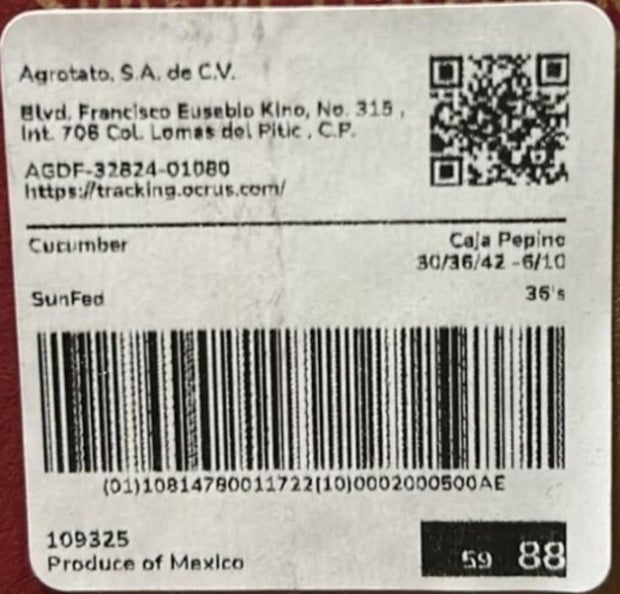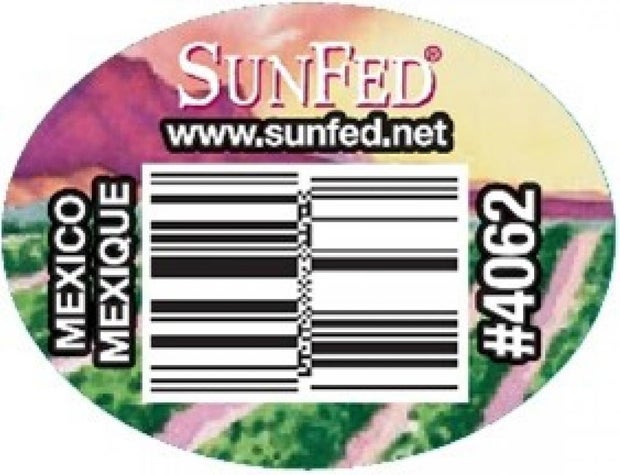CBS News
Arrests made in connection with 6 bodies found in Southern California’s Mojave Desert

Authorities said they have arrested suspects in connection to the six people found dead in a remote area of the Mojave Desert in San Bernardino County last week.
The killings happened on January 23, 2024, in El Mirage, just 10 miles north of Adelanto, around 8:15 p.m., according to the San Bernardino Sheriff’s Department.
When crews arrived at the scene, near Lessing Avenue and Shadow Mountain Road, they originally found five decreased individuals. A sixth individual was discovered in the morning.
Investigators have not yet disclosed how many people were taken into custody or how the arrests occurred.
There have still not been any details released on the cause of the victim’s deaths or how they came to be in the remote area.
As the investigation developed, San Bernardino County Sheriff’s Department Specialized Investigations Division detectives were called to the scene.
With SkyCal overhead, two cars could be seen near where the bodies were located, one of which appeared to be riddled with bullet holes. The cars were surrounded by dozens of evidence markers.
A press conference will be held at 5 p.m. on Monday with more information on the incident.
Thanks for reading CBS NEWS.
Create your free account or log in
for more features.
CBS News
Cucumbers recalled across U.S. and Canada over possible salmonella contamination

An Arizona produce company is recalling whole cucumbers distributed in 26 states and Canada because they could contain salmonella.
In a filing posted by the Food and Drug Administration on Thursday, SunFed said the recalled cucumbers were sold between Oct. 12 and Nov. 26 and are being pulled from store shelves over possible contamination by the bacteria. Salmonella can cause fatal infections in young children, elderly people or other individuals with weakened immune systems.
The recall applies to all sizes of SunFed whole, fresh cucumbers. The produce came packaged in bulk cardboard containers with a “SunFed” label, or could also have been displayed in a generic white box or black plastic grate. A sticker on such containers would indicate the cucumbers’ grower’s name, the company said.
The produce was shipped to customers in the following states: Alaska, Arizona, Arkansas, California, Colorado, Connecticut, Florida, Idaho, Illinois, Indiana, Kansas, Maryland, Massachusetts, Minnesota, Missouri, New Jersey, New York, North Carolina, Oklahoma, Pennsylvania, Tennessee, Texas, Utah, Virginia, Washington and Wisconsin. Some of the recalled cucumbers also could have ended up at retail outlets beyond those states.
The cucumbers were also sold in the Canadian provinces of Alberta, British Columbia, Calgary, Ontario and Saskatchewan.
SunFed
SunFed
Consumer are urged to check their own produce against images of the potentially affected products and to refrain from consuming or distributing suspect cucumbers. Recalled products should be destroyed, SunFed said.
“As soon as we learned of this issue, we immediately acted to protect consumers. We are working closely with authorities and the implicated ranch to determine the possible cause,” SunFed President Craig Slate said in a statement.
Consumers who may have bought the recalled products or who have questions can contact SunFed’s recall hotline at (888) 542-5849, Monday through Friday from 8 a.m. to 5 p.m. Mountain Time.
Earlier this year, an outbreak of salmonella linked to recalled cucumbers from two Florida growers sickened at least 449 people in 31 states and the District of Columbia.
Salmonella bacteria cause about 1.3 million infections, 26,500 hospitalizations and 420 deaths in the U.S. every year, with food being the source for most of the illnesses, according to the Centers for Disease Control and Prevention.
CBS News
Connecticut Democratic lawmakers report bomb threats on Thanksgiving

Three Democratic lawmakers from Connecticut on Thursday reported bomb threats, one day after members of key senior staff picks of President-elect Donald Trump’s reported they were targeted by threats and “swatting.”
Sen. Chris Murphy, Rep John Larson and Rep. Jim Himes — all Democrats — issued statements on Thursday that their homes were subject to bomb threats. Murphy’s office said the threats appeared to be “part of a coordinated effort involving multiple members of Congress and public figures.”
Trump transition spokeswoman Karoline Leavitt said in a statement on Wednesday that several of Trump’s planned nominees had been targeted with swatting or bomb threats.
Reps. Elise Stefanik and Lee Zeldin, tapped to be U.N. ambassador and EPA administrator respectively, both said they were targeted, and the NYPD responded to a threat at the home of Howard Lutnick, tapped to be Commerce Secretary. Susie Wiles, Trump’s incoming chief of staff, and Pam Bondi, the former Florida attorney general whom Trump has chosen to be the next U.S. attorney general, were targeted in this wave of attacks, according to a senior law enforcement official.
Former Rep. Matt Gaetz, Trump’s original pick to be Attorney General who later withdrew his name from consideration, also reported being targeted.
“Swatting” is the action of falsely calling emergency services in an effort to send armed police officers to a specific address or target in a threatening way. Bomb threats can represent a form of swatting — misleading authorities to believe that a serious threat or crime is underway to prompt an urgent response from police. And in rare cases, they’ve led to fatal outcomes.
The Department of Homeland Security warns that the criminal trend — a “daily occurrence” that often occurs in clusters — wastes police and first responder resources, plus can lead to dangerous altercations between law enforcement officers. Mark Herring of Tennessee suffered a fatal heart attack in 2021 after he was targeted, while a Kansas man was shot dead by police in 2017 who responded to his home.
Though swatting may lead to felony charges and can be punishable by years behind bars, suspects are often tricky to track. Offenders routinely employ caller ID spoofing, social engineering tactics, voice masking technology, and even tactics teletypewriter (TTY) technology (a phone system designed for people who have hearing or speech impairments) to mask their identity or pose as a victim.
CBS News
This is how retailers get you to spend more money

As shoppers gear up for Black Friday and the holiday shopping season, it can be easy for people to rack up debt that will weigh them down well into the new year. So it pays for consumers to be aware of some of the tactics retailers employ to get them to spend.
For example, most offers that dangle savings in the form of free shipping or a free gift if you spend over a certain amount don’t save you money. The practice, called “spaving,” or spending more in order to save, rarely benefits consumers, according to personal finance experts.
“I understand the appeal of getting to checkout and a notification pops up saying spend $10 more to get some perk,” LendingTree senior economist Jacob Channel told CBS MoneyWatch. “But 90% of the time when you break it down, it doesn’t make sense. You’re not actually saving money if you are spending more of it.”
Here are five tactics retailers use to get you to spend more, according to the U.S. Public Interest Research Group (PIRG), a consumer advocacy group.
Creating a false sense of urgency
The fear of missing out on a good deal can nudge consumers into making impulse buys. Although some offers really are only valid for a limited time, U.S. PIRG identified a number of sellers on Etsy, an e-commerce site for independent craftspeople, who used fake countdown clocks for deals that never expire.
Of 20 top-selling products on the site with countdown timers on deals, 80% of them simply reset when their tickers tickers hit “0,” according to a PIRG study.
“The ‘limited’ time window may not be as limited as it sounds and the deals not as good as they seem,” U.S. PIRG’s R.J. Cross told CBS MoneyWatch. “Make your list, comparison shop on those items, and don’t get distracted by offers you haven’t had the time to think through.”
Implying scarcity
Online retailers may label products as “selling fast!” or, as a consumer is considering a purchase, display how many other consumers are browsing the same item.
“Retailers and advertisers are always trying to get you to buy more than you need and spend more than you want,” Cross said in a statement. “Once you know what to look for, you end up chuckling when you see these tactics instead of falling for them.”
Pricing tricks
Ever wonder why a price reads $4.99 and not simply $5? When sellers round an item’s price down, it suggests to a shopper that it is cheaper, PIRG notes. Although $4.99 is only a penny less than $5, a shopper is more likely to fixate on the dollar figure — $4 — versus the cents.
Even removing a comma from a high sticker price like $1,200 and displaying it as $1200 can entice someone to pull the trigger, according to PIRG. Meanwhile, breaking the cost of an item down into monthly installments can also make the price seem smaller than it really is, the organization noted.
“You’re still going to have to pay the full cost, and sometimes even more in late fees, if you’re not careful,” Cross pointed out.
Dubious testimonials
Many retailers feature online testimonials ostensibly from customers raving about a “life-changing” vacuum cleaner or pair of sweatpants. Some of these account are from real customers, while other reviews cannot be trusted because they have been generated by a bot or the company itself, PIRG said.
At bottom, it’s a form of peer pressure — shoppers are subtly induced to think that buying the product will make them as happy as the satisfied customers depicted in the testimonial. In reality, many online reviews are fake, especially as AI bots proliferate.
“When you look at reviews on a product, don’t necessarily take the star ratings for granted. Better to look through the comments and find those that seem real — that either include a picture of the product or that make a point specific to the product instead of a generic note like ‘great product!'” Cross recommends.
Appeals based on fear
Many marketing pitches and ads suggest that your life will somehow be worse if you don’t make a purchase, from being at risk of a home invasion to hair loss. With e-commerce, of course, such messages are tailored to your individual interests and tastes given that website cookies track share your browsing patterns with retailers.
Messages “about how to fix our perceived flaws only become more capable of finding us at all hours of the day whenever we go online,” Cross said.





